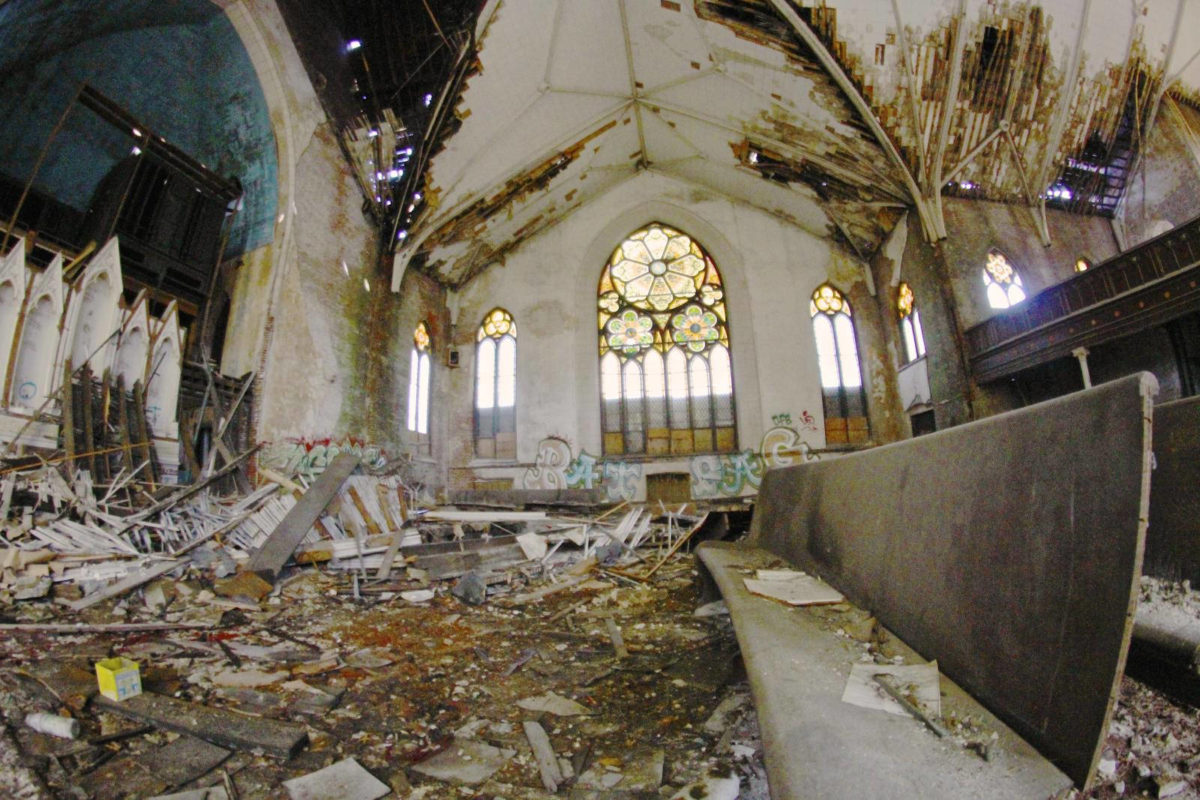Yes, Jesus. It is good to be here. Isn’t this just the right summary of the Transfiguration? Indeed, how good it is to be here and yet how good it needs to be for those not there? That is, in part, why Transfiguration is where it is in the church year. It is so good to be here — to point to Jesus’ acts of divinity. To witness to Jesus’ revelations of who God might be. But to see where and when God’s epiphanies actually impinge on our present necessitates Lent. And Good Friday. And Easter.
Lest we preach a sermon that only says, “there’s more to the story,” or “you can’t hang on to the present” or, “God’s glory cannot be contained,” all really boring sermons, in my opinion, we need to preach that Transfiguration is no mere transition. Transfiguration is no simple revelation. No, Transfiguration is transfiguration. There is just no way you can be the same after an event like this. And that is the point.
In part, Transfiguration Sunday here and now is perfect. What will you do with Jesus’ epiphanies now that you are going into Lent? What will you do with God’s revelations once you realize where they lead? What will you do with “this is my beloved child” once you realize these are God’s words for you?
This is the heart of Transfiguration preaching — at least how it’s positioned in the church year. Our preaching task, therefore, is to help people make this transition. That this bold statement from heaven defines Lent. That, the transition from, “you are my child,” to “this is my child,” means that you share, along with Jesus, a move from chosenness and glory to heartache and rejection. To abuse and imprisonment. To injustice and death.
Once God says, “this is my daughter, this is my son,” a declarative that we get to overhear, this is no mere baptismal affirmation anymore, or at least one where you can rest on your blessings. No, it propels you into a life, a way of being, that manifests the Kingdom of God for all to see. And when the Kingdom is visible, is palpable, you can be sure that forces perceiving it as a threat, as that which might usurp power, will be poised and ready to figure out how to extinguish its light. No wonder Peter had to sit for a bit in, “it’s good to be here.” Post-Transfiguration life is not for the faint of heart.
But we try to stay where we are. That’s the safe option, after all. Same. Staid. Solid. I get it. Especially when we see what we have known, on which we have relied, in whom we’ve believed all crumbling before our very eyes. Whether these disintegrating edifices are our churches, our denominations, our democracy — or our relationships, our communities, our country — too often our only options in response appear to be pop up tents, quick fixes, provincial vision statements, or nearsighted adaptations — none of which actually trust in a future that God holds.
This leads to another overlooked truth of the Transfiguration — that what we’ve seen so far is nothing compared to what’s in store. The Transfiguration is no mere demonstration of God’s glory, but that which insists God’s glory will persist in the midst of and in spite of all that would point to the contrary.
The Transfiguration reveals the power of our present because of God’s presence in Jesus, but it also points to the potential of our future. That’s what Peter could not see. But, we can’t blame him or think we could do better. Because, we can’t. We constantly and continually try to contain the present. And why? Because we believe, falsely, that the present is that which can be controlled and therefore, our futures as well. And so, our default decisions are likely dependent on the assumption that our lives will willingly bend to our momentary needs and our contextual commitments.
This delusion, therefore, demands the claim of the Transfiguration in all of its fullness and refuses to narrate this event in Jesus’ life as just one more miracle story. If the Transfiguration is to mean anything for our lives, it simply has to be that which intrudes on our present, changes our present, and contends that we imagine our future in a different kind of way — a Lenten way, a crucifixion way, a resurrection way. Because any revelation of Jesus’ teaching, preaching, pastoral care, or, even presence reveals our future and claims our future.
And so, Dear Working Preachers, are we ready to embrace a new future? Are we ready to have our future claimed by God? One that is not just inhabiting space or intent on constructing places that define and limit, that restrain and monitor, but a future where the grandeur of Moses and Elijah, the sheer grace of God’s covenants with God’s people explode our expectations? Can we all admit that a transfigured God demands a transfigured believer — and damn, that’s me?
A transfigured believer is one who insists that God’s glory is not a self-individualized endeavor but needs to be experienced by all. A transfigured believer is one who insists that those constrained by any form of myopic theologies be freed. And, a transfigured believer is one who knows that this is the divine moment that makes getting to the cross possible and crosses over into Lent holding that to heart.
Karoline

